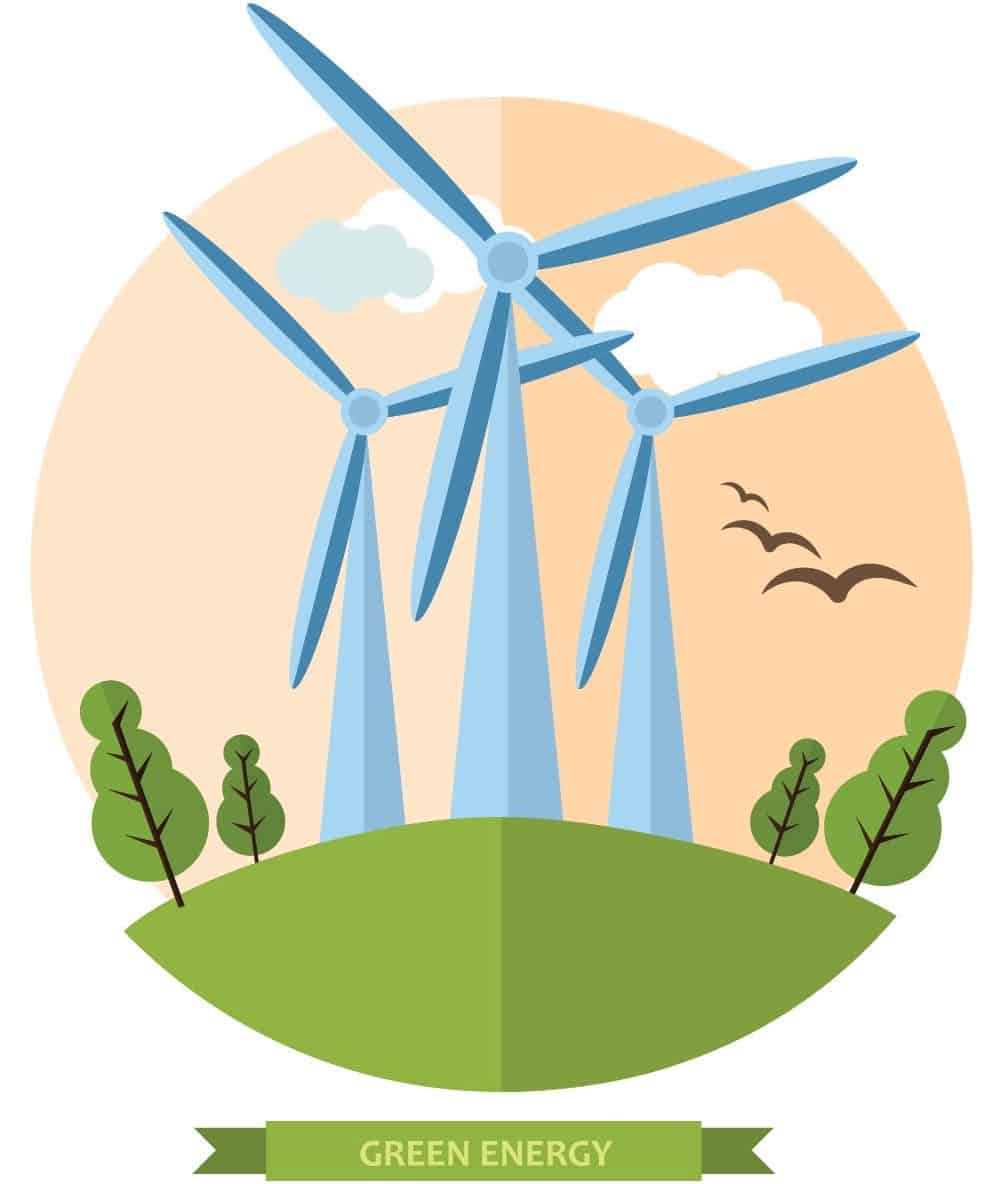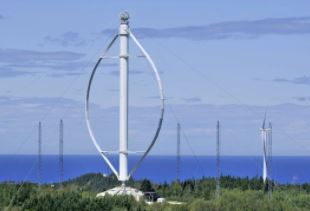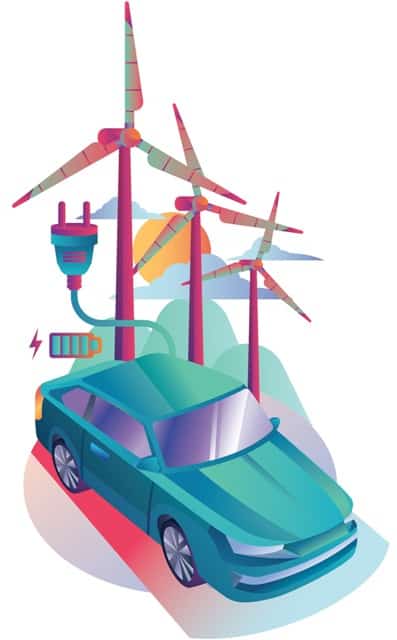
Amazing 8 Facts about Wind Turbines For Kids
We will explore wind turbines together and learn what a wind turbine is, its types, and what it looks like. We will give you a few amazing facts about wind turbines and so much more.
A wind turbine is a power-generating device that is driven by the kinetic energy of the wind. It is a device that converts the wind’s kinetic energy into electric energy. How do wind turbines work?
First, we must know that there are small wind turbines and large microgeneration.
Small wind turbines, known as micro wind turbines, are used for the microgeneration of electricity. As opposed to other than large commercial such as those found in wind farms.
A wind farm is a large group of wind turbines in one place used to produce electricity. It often has passive yaw systems instead of active ones.
The first modern wind turbines were built in the 1940s in Vermont, USA.
In 1941, the Smith-Putnam wind turbine, the world’s first-megawatt wind turbine, was connected to the local electric distribution system.

They use a direct drive generator. Moreover, they are used for applications such as battery charging for auxiliary power for boats or caravans and to power traffic warning signs.
Small wind turbines may be used for various applications, including one- or off-grid residences, telecom towers, offshore platforms, rural schools and clinics, remote monitoring, and other purposes that require energy where there is no electric grid or where the grid is unstable.
The Smaller can be used to charge batteries or as backup power, and also can be connected to the electrical grid through your power supply, or they can be stand-alone (off-grid).
There is a list of the most powerful wind turbines as of February 2021. The list includes wind turbines with a power rating that is within 5 MW of the current most powerful wind turbine that has received customer orders that is at least at the prototype stage.
Greased power trains, alternating current output, and flaps are actively pointed into the wind. Direct drive generators and aeroelastic blades for large wind turbines are being researched.
Large turbines are the more costly turbines generally. It can contribute to a domestic power supply while selling unused power back to the utility supplier via the electrical grid. Most large wind turbines are of roughly the same design.
The windmill is a structure that converts wind power into rotational energy using vanes called sails or blades, specifically to mill grain (gristmills), but the term is also extended to wind pumps, wind turbines, and other applications.
A windpump of 200 feet (60.96 m) is a type of windmill which is used for pumping water. A turbine is a rotary mechanical device that extracts energy from a fluid flow and converts it into useful work.
The work produced by a turbine can be used for generating electrical power when combined with a generator. Like old-fashioned windmills, today’s wind machines (also called wind turbines) use blades to collect the wind’s kinetic energy.
The wind flows over the blades creating lift, like the effect on aeroplane wings, which causes them to turn. The blades are connected to a drive shaft that turns an electric generator to produce electricity.
When the wind isn’t blowing, at those times, it is considered a problem, but with the new wind machines (turbines), other types of power plants must be used to make electricity.
Types of wind turbines:
There are two types of wind turbines (machines) used today based on the direction of the rotating shaft (axis):

The first type is the horizontal-axis wind machines (turbines). In general, the wind turbines have a three-blade horizontal axis directed upwind, attached to a motor structure on top of a tall tubular tower.
It looks like windmills. Most wind machines being used today are horizontal-axis types.
Horizontal-axis wind turbines have blades like aeroplane propellers. A typical horizontal wind turbine stands as tall as a 20-story building and has three blades that span 200 feet (60.96 m) across.
The largest wind turbines in the world have blades longer than a football field. Wind turbines stand tall and wide to capture more wind. The second is the vertical-axis wind machines (turbines).
It looks like egg beaters. Vertical-axis wind turbines have blades that go from top to bottom. The most common type is the Darrieus wind turbine, named after the French engineer Georges Darrieus, who patented the design in 1931. It looks like a giant, two-bladed egg beater.
This type of vertical wind turbine typically stands 100 feet (30.48 m) tall and 50 feet in the wind. Vertical-axis wind machines make up only a tiny share of the wind turbines used today. The size of wind machines (turbines) varies widely.
Small turbines are used to power a single home or business that may have a capacity of fewer than 100 kilowatts. Some large commercial-sized turbines may have a capacity of 5 million watts or 5 megawatts.
Larger turbines are often grouped into wind farms that provide power to the electrical grid. Rotational kinetic energy is the energy associated with spinning around on an axis. It’s the energy of motion, just like linear kinetic energy.
Rotational kinetic energy depends on: how fast the object is spinning (faster spinning means more energy).
How much mass do the spinning objects have?
Wind energy is energy extracted from the wind’s kinetic energy by using turbines to produce electrical energy. It is a type of electromechanical energy. Today, advanced wind machinery, known as wind turbines, is used in many parts of the world to convert the wind’s kinetic energy into electrical energy.

Modern trade wind turbines produce electricity by using rotational energy to power a generator. These turbines consist of a shaft or tower high above the large blades and the engine’s base.
A wind farm is a large group of wind turbines in one place used to produce electricity. A large wind farm may consist of hundreds of individual wind turbines distributed over an extended area. Most large wind turbines are of roughly the same design.
It also has some drawbacks, as wind generators and blades can cause injury and death to birds, so wind farms must be in appropriate locations to minimize impacts on migratory bird populations and not affect wildlife.
Land turbines also impact the landscape because they occupy larger areas of land than other power plants, and because of the need to build wind farms in wild and rural places to be efficient, this leads to the loss of natural habitats and the industrialization of the countryside.
Wind turbines also emit a lot of noise, which is considered noise pollution. If a wind farm is built 300 meters away from a residential area, the noise will be at 45 decibels. This high or continuous noise causes diseases such as wind turbine syndrome.
That is a psychological disorder. However, if wind farms are built 1.5 kilometres away and positioned appropriately, most wind turbines will be inaudible, and their noise will not affect human health.
The sounds created by wind turbines are related to the changes in wind speed due to the blades moving; these have been classified as tonal and low-frequency sounds. When comparing these sounds with other typical sounds that can be found on the streets of a city, researchers have found that a wind energy farm is not as loud as it is believed.
The Wind Amplified Rotor Platform (WARP) is a different kind of wind system that is designed to be more efficient and use less land than wind machines (turbines) in use today. The WARP does not use large blades; instead, it looks like a stack of wheel rims.
Each module has a pair of small power, power, high-capacity turbines mounted to both of its concave wind amplifier module channel surfaces. The concave surfaces channel wind toward the turbines, amplifying wind speeds by 50 percent or more.
Ensco, the company that designed WARP, plans to market the technology to power offshore oil platforms and wireless telecommunications systems.
Some interesting facts about wind turbines
- The environmental impact of wind power is relatively less than that of fossil fuel power compared to sources that emit the most carbon.
- With the potential for global warming over the life cycle of energy sources, wind turbines have an average value depending on whether the turbines are offshore or onshore.
- When the wind flows and reaches the blade, the air pressure decreases on one side of the blade, and this pressure difference creates lift and force.
- Wind turbines have been in use since 2000 BC. It was first developed in Persia and China. Turbine,
- The first modern wind turbines were built in the 1940s in Vermont, USA.
- In 1941, the smith-Putnam wind turbine, the world’s first-megawatt wind turbine, was connected to the local electric distribution system. The turbine ran for 1,100 hours before the blade failed at a known weakness, which was not reinforced due to wartime material shortages. It would be the largest wind turbine until 1979.
- Wind turbines can be built either on land or on large water bodies such as oceans and lakes.
- Wind turbines, activated by the wind, generate electricity for homes and businesses and sell to utilities.
This was all about the wind turbines. We hope you enjoyed it. To practice even more on wind and learn other interesting subjects, keep visiting Learning Mole.


Leave a Reply